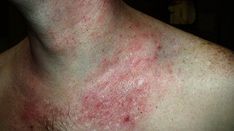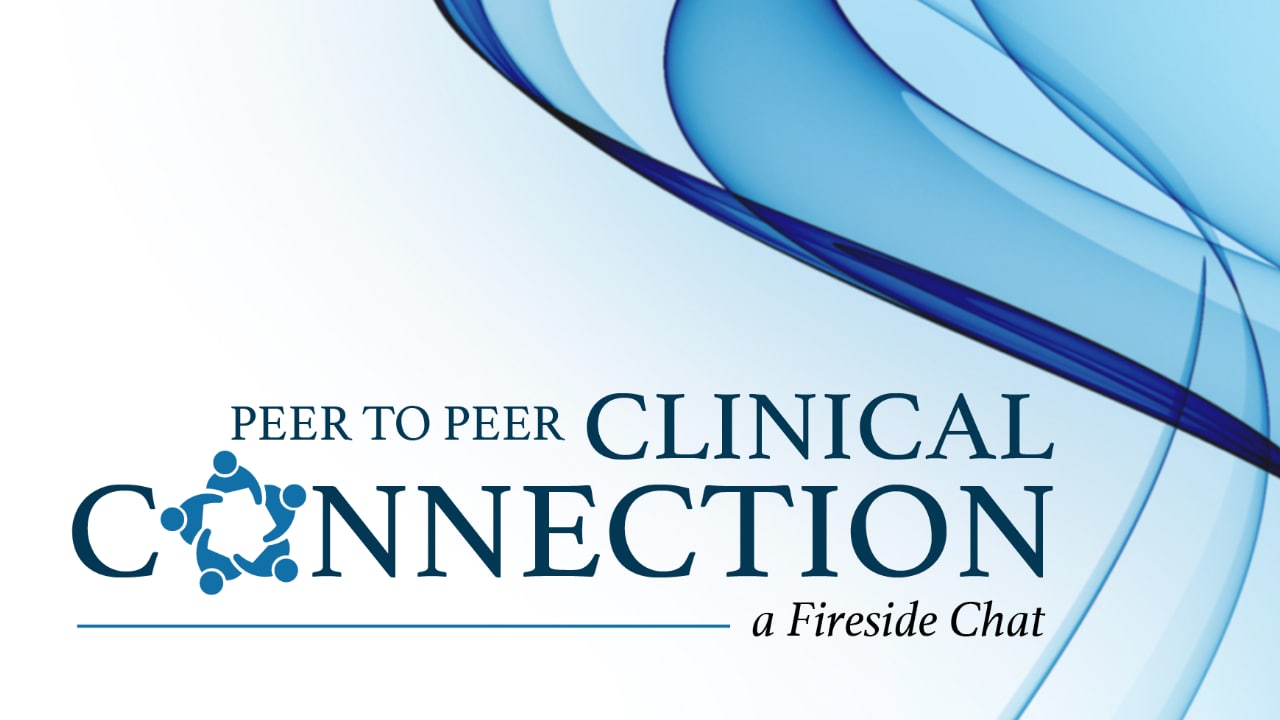Background
Lichen simplex chronicus (LSC) is thickening of the skin with variable scaling that arises secondary to repetitive scratching or rubbing. Lichen simplex chronicus is not a primary process. Rather, a person senses pruritus in a specific area of skin (with or without underlying pathology) and causes mechanical trauma to the point of lichenification.
A proposed variant of lichen simplex chronicus is lichen amyloidosis. Lichen amyloidosis is described as lichen simplex chronicus in which the keratinocytes have necrosed and formed keratinocytic-derived amyloid in the dermis. The initial insult is pruritus with resultant amyloid formation, rather than the reverse. [1, 2]
Pathophysiology
Lichen simplex chronicus is found on the skin in regions accessible to scratching. Pruritus provokes rubbing that produces clinical lesions, but the underlying pathophysiology is unknown. Some skin types are more prone to lichenification, such as skin that tends toward eczematous conditions (ie, atopic dermatitis, atopic diathesis). A relationship likely exists between central and peripheral neural tissue and inflammatory cell products in the perception of itch and ensuing changes in lichen simplex chronicus. Emotional tensions, such as in patients with anxiety, depression, or obsessive-compulsive disorder, may play a key role in inducing a pruritic sensation, leading to scratching that can become self-perpetuating. [3, 4, 5, 6] The possible interplay among primary lesions, psychic factors, and the intensity of pruritus additively influence the extent and severity of lichen simplex chronicus.
A small study looking at lichen simplex chronicus and the use of P-phenylenediamine (PPD)–containing hair dye showed clinically relevant improvement in symptoms after discontinuation of PPD exposure, [7] thus providing a basis for the role of sensitization and contact dermatitis in the etiology of lichen simplex chronicus.
Etiology
Atopic dermatitis results in a higher probability of developing lichen simplex chronicus.
Insect bites, scars (eg, traumatic, postherpetic/zoster [8] ), acne keloidalis nuchae, [9] xerosis, venous insufficiency, and asteatotic eczema are common factors.
Neurodermatitis is a term that historically has been used interchangeably with lichen simplex chronicus, given that psychological factors appear to play a role in the development or exacerbation of the condition. [10, 11, 12] A 2014 study demonstrated an increased prevalence of lichen simplex chronicus in patients with underlying anxiety and obsessive-compulsive disorder compared with age- and sex-matched controls. [5] A 2015 study showed that patients with lichen simplex chronicus have increased rates of clinical depression compared with patients without the condition. [6]
Lithium has been linked to lichen simplex chronicus in one reported case. Lichen simplex chronicus was dependent on the administration of lithium as evidenced by the observation that the lichen simplex chronicus remitted when the medication was discontinued and recurred when it was restarted. [13]
A small study looking at lichen simplex chronicus and the use of PPD-containing hair dye showed clinically relevant improvement in symptoms after discontinuation of PPD exposure, thus providing a basis for the role of sensitization and contact dermatitis in the etiology of lichen simplex chronicus. [7] . Several of the patients who cleared after avoiding paraphenylenediamine had widespread, not localized, dermatitis.
Long-term exposure to street traffic exhaust has been associated with an increase in the frequency of childhood skin diseases, including lichen simplex chronicus. [14]
Some reserve the diagnosis of lichen simplex for patients who have no known predisposing skin disorder. The term secondary lichenification has been used if the eruption is initiated by a primary dermatosis.
Epidemiology
Frequency
Exact frequency in the general population is unknown. In one study, 12% of aging patients with pruritic skin had lichen simplex chronicus.
Race
No differences are reported in frequency among races, although prior authors claimed lichen simplex chronicus was more common in Asians and African Americans. The appearance of lesions on darker skin sometimes shows follicular prominence. Secondary pigmentary alterations are also more severe in individuals with darker skin.
Sex
Lichen simplex chronicus is observed more commonly in females than in males. Lichen nuchae is a form of lichen simplex that occurs on the midposterior neck and is observed almost exclusively in women.
Age
Lichen simplex chronicus occurs mostly in mid-to-late adulthood, with highest prevalence in persons aged 30-50 years.
Prognosis
Lesions may clear completely. Pruritus may resolve, but some mild scarring and pigmentary changes remain after successful treatment. Relapse is more likely in periods of psychic stress or if previously affected skin is stressed by extremes of heat or humidity or by skin irritants or allergens. In patients who do not comply with the treatment regimen and scratching cessation, lesions will not improve.
No mortality occurs as a result of lichen simplex chronicus. Overall, pruritus of lichen simplex chronicus is mild to moderate, but paroxysms may occur that are relieved by moderate-to-severe rubbing and scratching. Pruritus is usually described as much worse during periods of inactivity, usually at bedtime and during the night. [15] Touch and emotional stress also may provoke pruritus, which is relieved by moderate-to-severe rubbing and scratching.
Lesions cause little direct morbidity; however, occasionally patients report decreased or interrupted sleep, which affects motor and mental functioning.
Lichen simplex chronicus may become secondarily infected after excoriation.
Lichen simplex chronicus is often visible enough to cause patients to seek treatment.
Patient Education
Direct patients to stop scratching. Lichen simplex chronicus is worsened or improved depending on the patient's ability to stop scratching. Discussing individual ways to change habitual scratching is helpful.
-
Plaque of lichen simplex chronicus demonstrating accentuated skin markings. Courtesy of San Antonio Uniformed Services Health Education Consortium Dermatology Program.
-
Area of lichen simplex chronicus originally believed to be chronic contact dermatitis. The true nature was revealed when the patient admitted to rubbing this area while watching television. Courtesy of San Antonio Uniformed Services Health Education Consortium Dermatology Program.
-
Plaques of lichen simplex chronicus on the hand.
-
Lichen simplex chronicus of the dorsal hand and wrist demonstrating increased skin thickness and accentuation of skin markings.
-
Plaque of lichen simplex chronicus of the leg with accentuated skin markings and excoriations.
-
H and E biopsy of lichen simplex chronicus from forearm skin viewed at 40x magnification. Note the characteristic hyperkeratosis, hypergranulosis, pseudoepitheliomatous hyperplasia, and papillary dermal fibrosis.
-
H and E biopsy of lichen simplex chronicus from forearm skin viewed at 100x magnification. Note the characteristic hyperkeratosis, hypergranulosis, pseudoepitheliomatous hyperplasia, and papillary dermal fibrosis.










